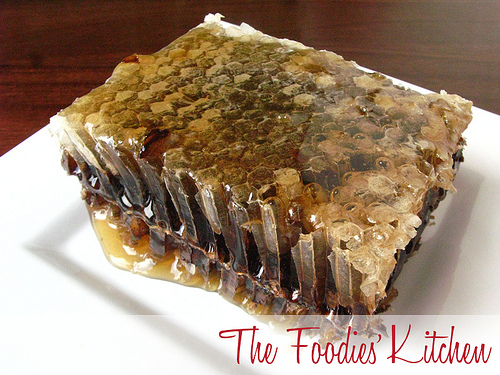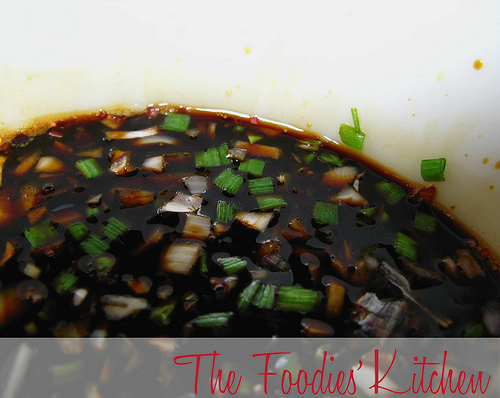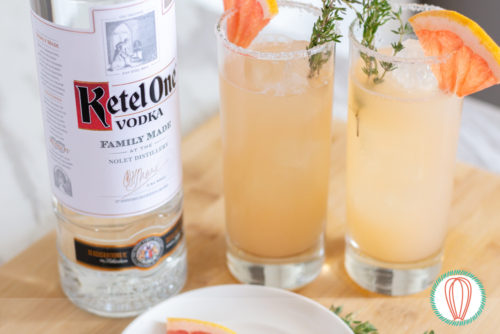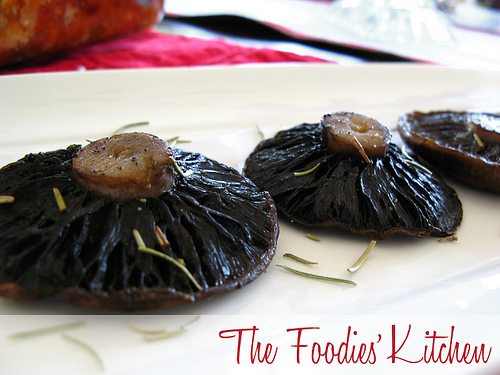
Honeycomb: Ways to use it
This post is also available in / Esta entrada también está disponible en ESPAÑOL (SPANISH)
At TFK, we’re always on the lookout for new ingredients to try out, we like to read about how ingredients are used and what their health benefits might be, not only to share this information on our blog, but so that we too can learn about these things.
I came across this honeycomb that I got from Super Verduras, and it took me back to my childhood. My mom would always keep some around together with a spreadable honey that we used on black bread slices for breakfast. We used to buy this bread from a bakery called Jensen, which sold the absolute best Christmas cookies. Sigh… it seems like ages ago. I miss those cookies.
Let’s not go into how honey is made, or how the bees keep the nectar they gather from the flowers inside honey sacs inside their bodies, because in all honesty, and with much love to Nature… it’s a little gross. There’s bee saliva involved, people! According to a reader, Jessica: “Bees do not actually involve saliva in the making of honey. A lot of people believe they do, but this nothing but a well spread rumor.“
So let’s keep honey a wonderful, golden, sweet nectar gathered by bees using little blue buckets, shall we? 💛
The honeycomb comes into play, when the bees return with the honey (inside their little blue buckets) and they deposit it inside a network of little hexagonal cylinders made out of wax. We’re not going into how this wax is made, either. As the cylinders are filled with honey, they are “sealed” by another layer of wax on top.
You can find honeycombs in gourmet stores or farmer’s markets; they are usually sold in either round or rectangular tubs. The darker the honeycomb, the better. It means the honey will have a more intense flavor.
Aside from chewing on it, because it tastes great, I looked around for other ways to use it:
- Cut little cubes of honeycomb and place them on top of a salad.
- Put a chunk of honeycomb on top of hot oatmeal.
- Mix in with natural yogurt, or vanilla ice cream (when ready to serve and eat).
- Slather a baguette with Brie, then top with chunks of honeycomb (this is the first thing I’ll try!).
- Make a salad of arugula, grilled chicken and slivered almonds. Top with crumbled soft goat cheese and small chunks of honeycomb (… or maybe this will be the first thing I try).
So, whenever you see a honeycomb you can think of me use these tips to enjoy it!
If you have kids around, it’ll be cool for them to see the honeycomb and taste the natural honey. Here are some fun bee facts you can share with them:
- Bees are the only insect in the world that make food that people can eat (there are honey ants too, Sarah pointed that out in the comments section!)
- Eating honey can help you get smarter! It is the only food to contain pinocembrin that is an antioxidant that improves brain function.
- One bee will only make 1/12 of a teaspoon on honey in its entire life.
- A colony of bees can contain between 20,000 and 60,000 bees, but only one queen bee.
- A bee’s wings beat 190 times a second, that’s 11,400 times a minute!
- Each colony smells different to bees, this is so they can tell where they live.
- It would take 1,100 bees to make 1kg of honey and they would have to visit 4 million flowers.
- Bees have two separate stomachs; one for food and another just for nectar.
- Bees have been around for more than 30 million years.
- Bees communicate by smells called ‘pheromones’ and by performing special ‘dances’.
- Bee keepers only take the honey that the bees do not need, but this can be as much as 45kg from one hive!
- There are lots of different types of honey which taste different depending on the flowers used to make it.
Sources
The Food Network
Bees4Kids
© 2012 – 2020, The Foodies’ Kitchen. All rights reserved | Todos los derechos reservados
This post is also available in / Esta entrada también está disponible en ESPAÑOL (SPANISH)





Comments (6)
Sarah
February 7, 2016 at 12:26 am
I would disagree with ‘bees are the only insect in the world that make food we can eat’ there are honey ants too
Kitty
February 7, 2016 at 12:29 pm
Oh we didn’t know about those Sarah! Thanks for your input! :)
Jessica
June 20, 2016 at 5:35 pm
Just a friendly little correction from a paid ecologist: Bees do not actually involve saliva in the making of honey. A lot of people believe they do, but this nothing but a well spread rumor.
Kitty
June 20, 2016 at 6:04 pm
Thank you Jessica! Will fix it right away! 🙂
Kylie Read
November 26, 2016 at 10:39 pm
Another little fact..
Male bees don’t have stingers only females do.
The Foodies’ Kitchen
November 28, 2016 at 11:03 pm
Thanks Kylie! Good fact! :)